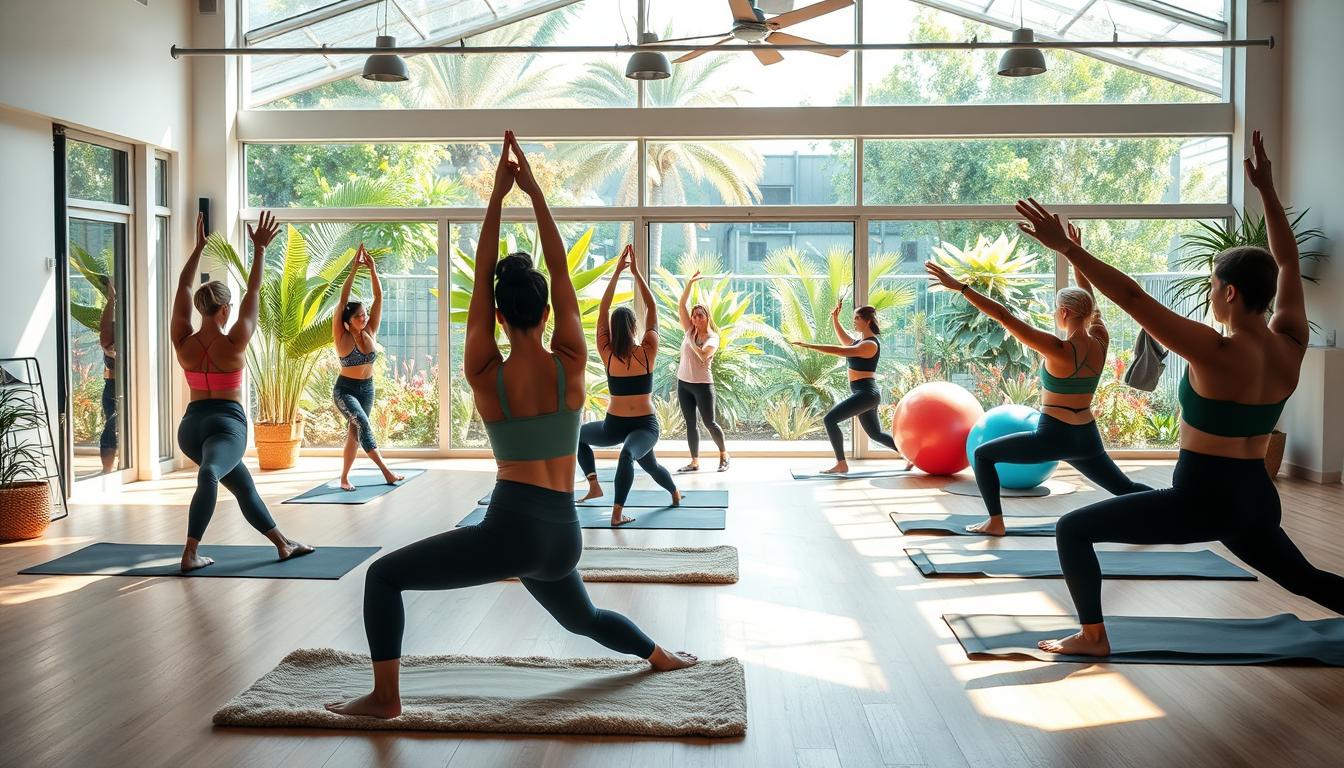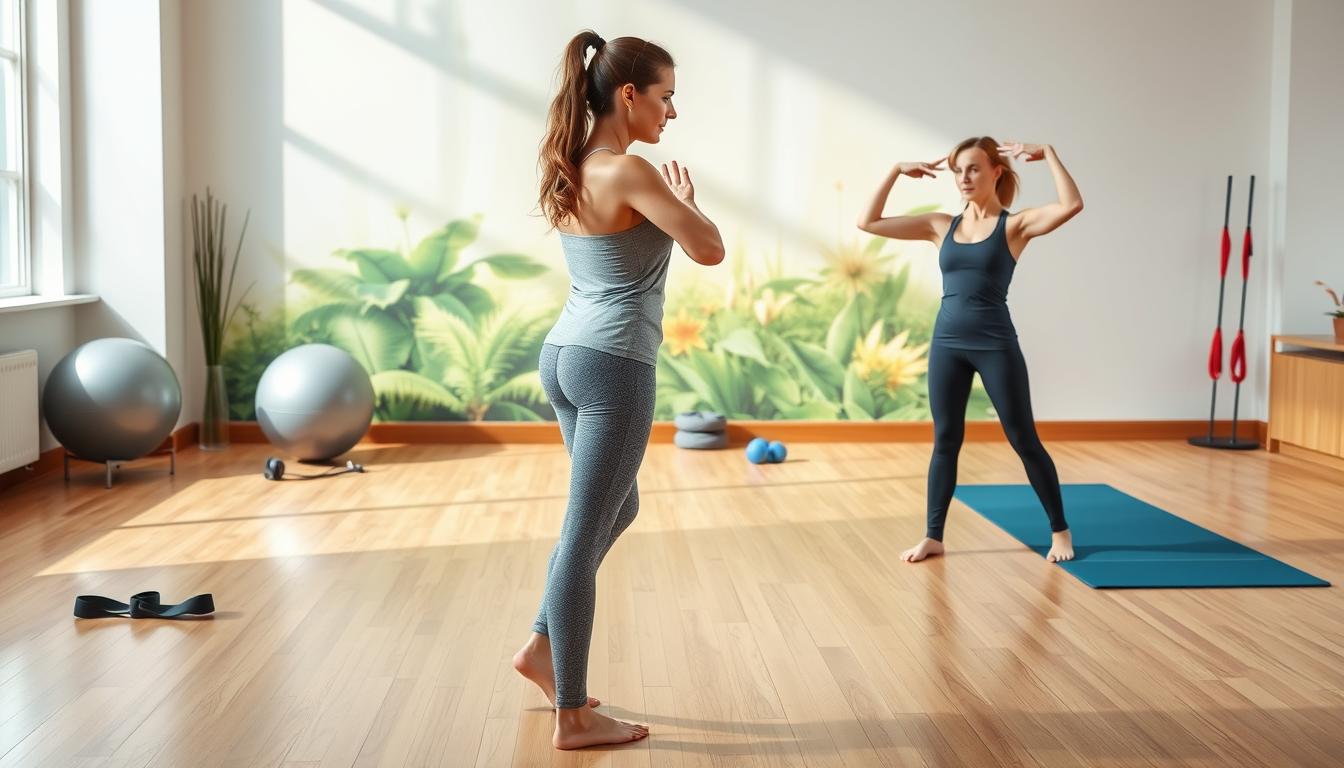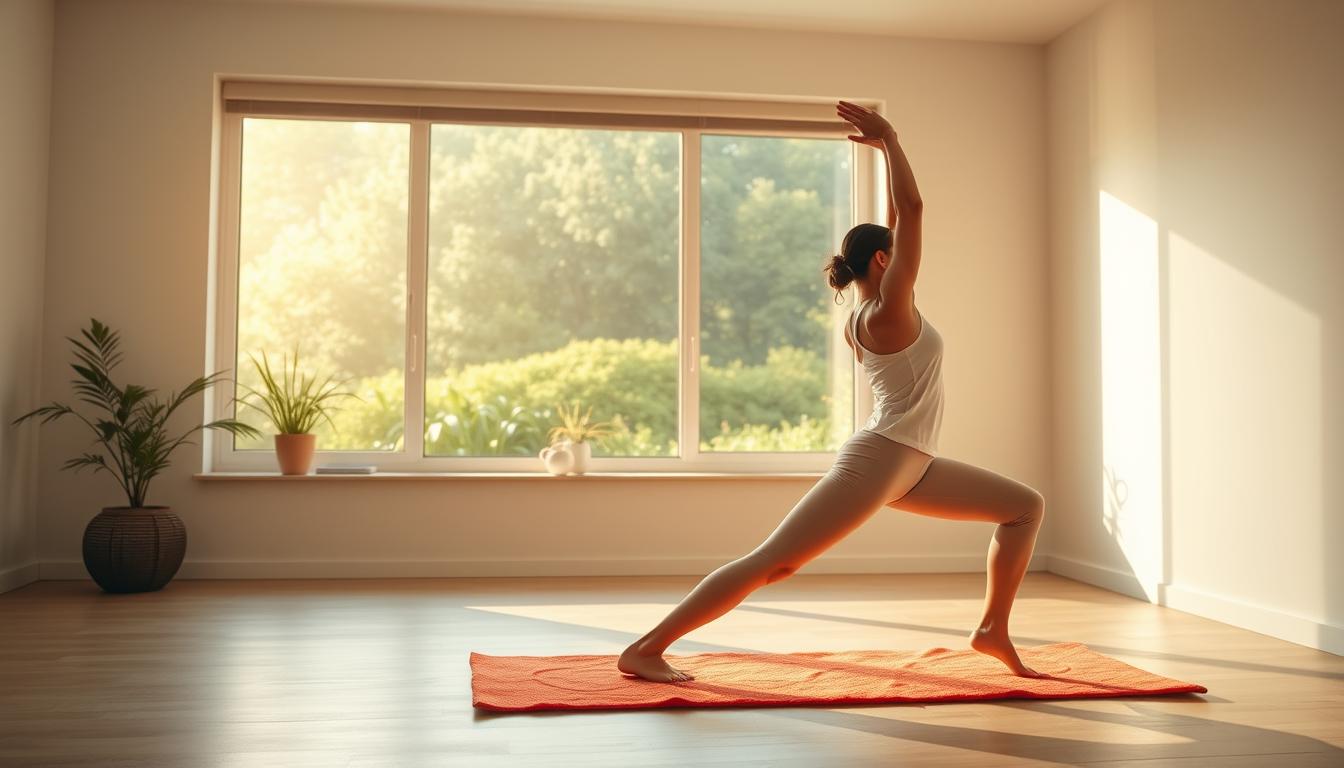Did you know that over 50% of adults in the U.S. experience joint pain, making high-intensity exercises challenging? If you’re looking for a way to stay active without straining your body, there’s a solution. Low-impact exercises are gaining popularity for their ability to deliver results while being gentle on your joints.
These routines are perfect for all fitness levels, whether you’re recovering from an injury or just starting your fitness journey. They help improve aerobic capacity and body composition, making them a sustainable choice for long-term health. Plus, they’re adaptable to your weight loss goals and can even aid in managing blood sugar levels.
With reduced stress on your joints and consistent calorie burn, low-impact exercises offer a balanced approach to staying fit. They’re not just a trend—they’re a practical way to prioritize your health without compromising your body.
Key Takeaways
- Low-impact exercises are joint-friendly and effective for all fitness levels.
- They help improve aerobic capacity and body composition.
- These routines are ideal for injury recovery and beginners.
- They support sustainable calorie burn and weight loss goals.
- Low-impact training can improve long-term health outcomes like blood sugar management.
What Are Low-Impact Workouts?
Have you ever wondered how to stay active without overloading your joints? These types of exercises minimize ground reaction forces, meaning they exert less than 1.5 times your body weight. In contrast, high-impact activities like running can put 2 to 5 times your body weight on your joints.
Water-based activities, such as swimming, are particularly effective. The buoyancy of water reduces joint stress by up to 90% compared to land-based exercises. This makes them ideal for those managing joint pain or recovering from injuries.

According to the CDC, staying active within safe thresholds is crucial for joint preservation. Low-impact routines are perfect for post-injury rehab, arthritis patients, and even prenatal fitness. They offer a way to maintain your health without risking further damage.
While the calorie burn might be slightly lower than high-impact activities, the benefits are significant. For example, a 30-minute swim burns around 240 calories, compared to 300 calories for running. The key is consistency and finding the right activity for your needs.
- Biomechanical Advantage: Less stress on joints due to reduced ground reaction forces.
- Water Buoyancy: Swimming reduces joint load by up to 90%.
- Target Audiences: Ideal for injury recovery, arthritis, and prenatal fitness.
- CDC Guidelines: Safe exercise thresholds help preserve joint health.
- Calorie Burn: Slightly lower but still effective for weight management.
Benefits of Low-Impact Workouts
Discover how gentle exercises can transform your health and fitness. These routines are not just easy on your body—they also deliver significant health benefits. From improving your heart health to aiding in weight loss, they’re a smart choice for long-term wellness.
One key advantage is the EPOC effect, which helps you burn 6-15% more calories after your workout. This means your body continues to work even after you’ve finished exercising. It’s a great way to maximize your efforts without overexertion.

Mental health is another area where these exercises shine. A 2018 study found that participants who practiced yoga experienced 43.2% fewer poor mental health days. This highlights how they can reduce stress and improve overall well-being.
For those with joint pain, these routines offer biomechanical protection. They place less stress on your knees and hips compared to high-intensity activities. This makes them ideal for anyone looking to stay active without risking injury.
Hormonal balance is another benefit. Gentle exercises help lower cortisol levels, unlike high-intensity workouts that can spike stress hormones. This creates a more balanced approach to fitness.
Finally, they’re excellent for managing diabetes. Studies show that these exercises improve glucose disposal by 23%, making them a valuable tool for better health management.
Top Low-Impact Workouts That Burn Fat
Looking for effective ways to stay fit without straining your body? These routines are designed to be gentle on your joints while still helping you achieve your fitness goals. From swimming to yoga, each activity offers unique benefits that target different muscles and improve overall health.

Swimming
Swimming is a full-body workout that engages up to 12 major muscles simultaneously. The water provides natural resistance, making it an excellent choice for building strength and endurance. Strokes like freestyle and breaststroke target different muscle groups, ensuring a balanced workout.
Walking
Walking is simple yet effective. Adding an incline increases calorie burn by 15%, making it a great option for fat loss. It’s easy on your knees and can be adjusted to your preferred pace.
Cycling
Cycling is perfect for activating your glutes and hamstrings. Adjusting the gear resistance can intensify the workout, helping you build muscle while burning calories. It’s also a low-stress activity for your joints.
Rowing
Rowing combines cardio and strength training. Proper form can increase calorie burn by 40%. Focus on the catch, drive, and recovery phases to maximize efficiency and protect your core muscles.
Yoga
Yoga improves flexibility and elevates your heart rate to 50-70% of its max capacity. Styles like Vinyasa are ideal for fat burning, while Hatha focuses on strength and balance. Both enhance mental and physical well-being.
| Activity | Calories Burned (30 mins) | Primary Muscle Groups |
|---|---|---|
| Swimming | 240 | Full body |
| Walking | 150 (flat), 175 (incline) | Legs, core |
| Cycling | 260 | Glutes, hamstrings |
| Rowing | 280 | Arms, back, core |
| Yoga | 120 | Core, flexibility |
How to Incorporate Low-Impact Workouts into Your Routine
Ready to make exercise a part of your daily life? Let’s break it down. The American Heart Association recommends at least 150 minutes of moderate activity weekly for cardiovascular benefits. Start with a consistent routine that fits your schedule.
One effective method is the 30/30 interval approach. Alternate between moderate activity and recovery phases. For example, walk briskly for 30 minutes, then switch to a slower pace for the next 30. This keeps your heart rate in the optimal fat-burning zone (50-70% of max).

To avoid joint stress, create a progressive overload plan. Increase your activity duration by 5% weekly. Pair morning walking with evening yoga for a balanced schedule. This stacking method ensures you stay active throughout the day.
At the gym, optimize equipment settings. Use the elliptical ramp instead of the treadmill for reduced joint impact. Adjust resistance levels to challenge your muscles without overloading your joints.
Finally, incorporate active recovery between strength training days. Gentle activities like swimming or stretching help your body recover while staying active. Here’s a quick guide to weekly planning:
| Day | Activity | Duration |
|---|---|---|
| Monday | Walking | 30 minutes |
| Wednesday | Yoga Class | 45 minutes |
| Friday | Swimming | 30 minutes |
| Sunday | Cycling | 45 minutes |
By following these tips, you can build a sustainable routine that fits your lifestyle and supports your fitness goals.
Low-Impact Workouts for Specific Needs
Struggling with joint pain or aiming to shed a few pounds? There’s a tailored solution for you. Whether you’re managing arthritis or focusing on weight loss, these routines are designed to meet your unique needs. Let’s explore how you can stay active and achieve your goals without compromising your health.
For Joint Pain
If joint pain is holding you back, water aerobics can be a game-changer. Studies show it reduces hip joint load by 75% compared to land-based exercises. The buoyancy of water minimizes stress on your joints, making it ideal for osteoarthritis patients or those recovering from injuries.
Hydrotherapy protocols are another effective way to manage joint pain. These routines combine gentle movements with water resistance, helping you build muscle strength without strain. Incorporating resistance bands can further enhance your workout, providing a safe and effective option for joint health.
For Weight Loss
Cycling is a fantastic option if your goal is to lose weight. Riding at 65-75 RPM can burn 400-600 calories per hour. For even better results, try HIIT cycling intervals—30 seconds of sprinting followed by 90 seconds of recovery. This method maximizes calorie burn and boosts your metabolism.
Using a stationary bike allows you to adjust resistance levels, targeting your glutes and hamstrings effectively. Whether you choose an upright or recumbent bike, cycling is a low-stress activity that supports your weight loss journey while protecting your joints.
| Activity | Calories Burned (Per Hour) | Primary Benefits |
|---|---|---|
| Water Aerobics | 300 | Reduces joint stress, improves mobility |
| Cycling (65-75 RPM) | 400-600 | Boosts metabolism, targets lower body |
| HIIT Cycling | 500-700 | Maximizes calorie burn, enhances endurance |
| Resistance Band Workouts | 200-300 | Builds muscle, protects joints |
Conclusion
Want to improve your health without overloading your body? Gentle exercises focus on three key pillars: joint preservation, sustainable calorie burn, and adaptability. These elements make them a practical choice for long-term fitness success.
Progressive programming is essential. Gradually increasing intensity ensures you stay on track without risking injury. For personalized guidance, consider consulting orthopedic specialists like Dr. Benjamin Domb.
Still unsure? A 12-week case study showed participants improved their health markers by 30% while reducing stress and protecting their joints. Start your journey today with a tailored plan designed to help you achieve your goals.
Ready to take the next step? Develop a routine that works for you and experience the benefits of gentle fitness. Your health transformation begins now.